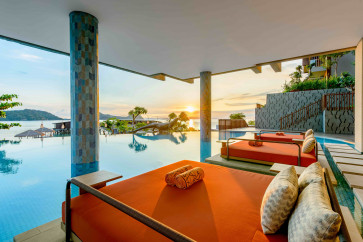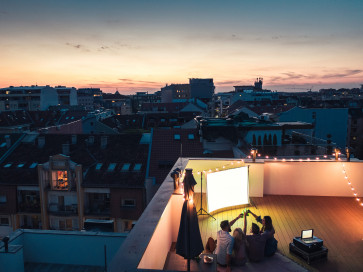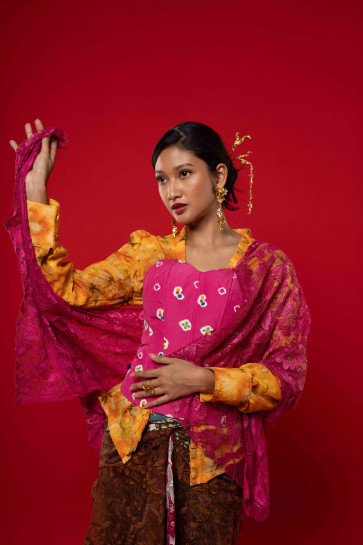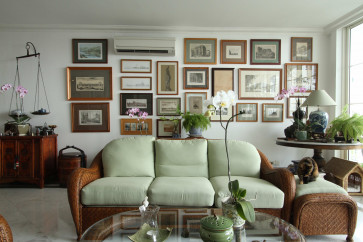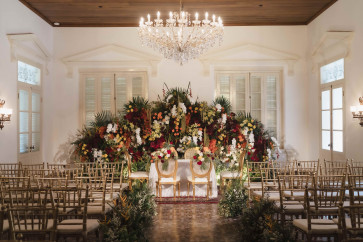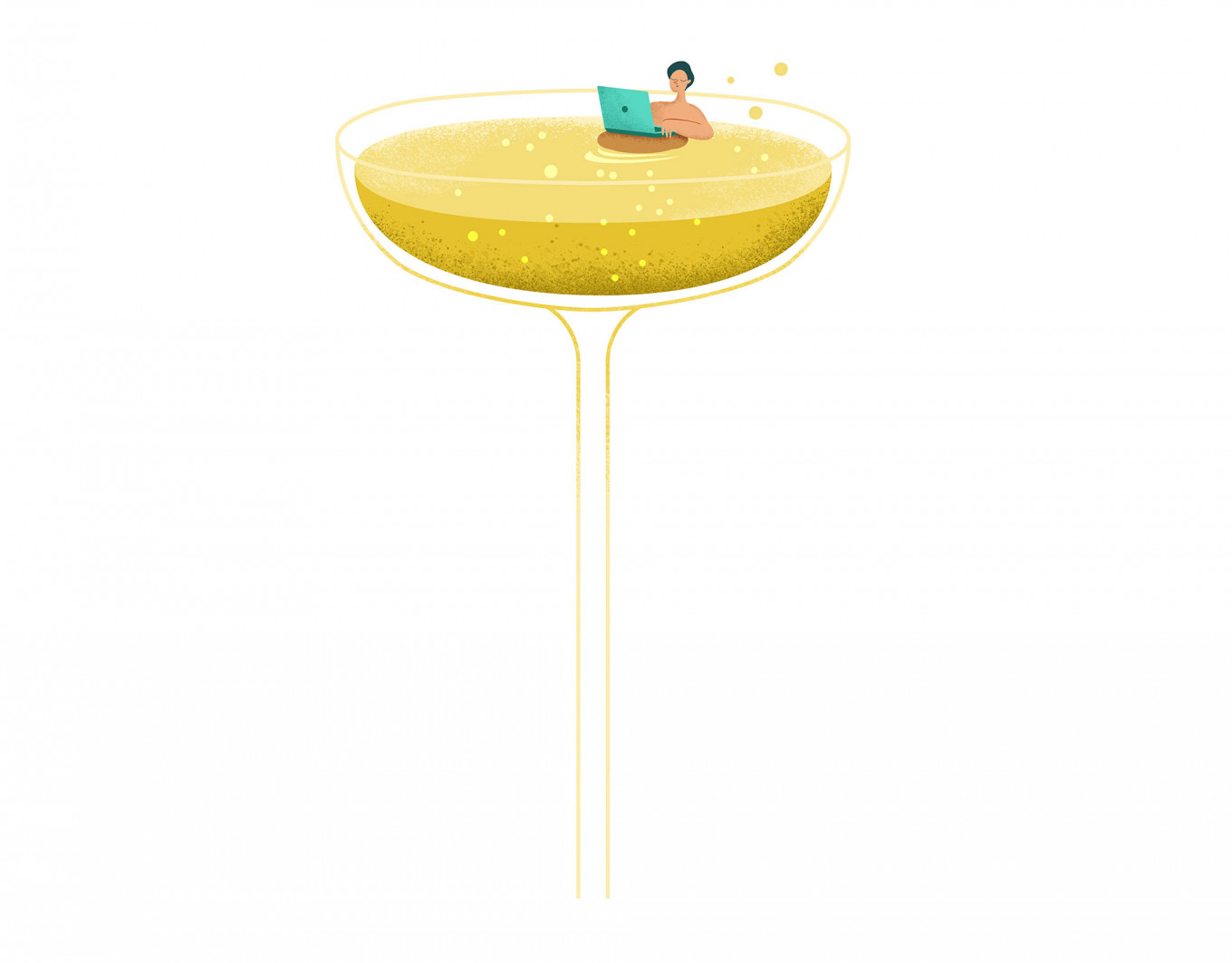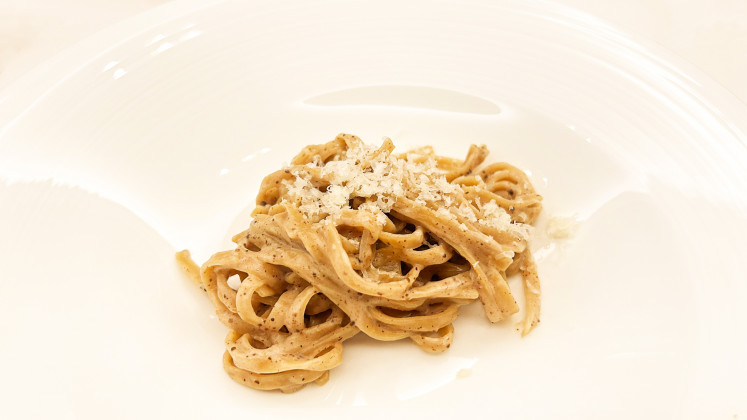(Illustrated by Budhi Button)
From this high up, the throngs of people down below look microscopic, their bustling movements trivial. At night, the city lights duplicate the stars, standing in for galaxies eternally shrouded by light and other pollution.
I am typing this piece from the designated work nook of a one-bedroom suite in the heart of Jakarta, a warm glass of chamomile tea beside me to stave off the crisp air-conditioning and some innocuous lo-fi music from the giant TV in the living space to help set the mood.
Seclusion from the masses is the name of the game when you are 73 stories up in an ivory tower clad in glass and metal. Yet some wouldn’t consider the suite luxurious because of height alone, and that begs the question: What even is luxury?
Defining luxury
Merriam-Webster defines luxury as a “condition of abundance or great ease and comfort”, “something adding to pleasure or comfort but not absolutely necessary” and “an indulgence in something that provides pleasure, satisfaction or ease”.
Of course, I also once thought that having a chauffeured car drop you off at school in the morning and pick you up in the afternoon was the standard of an ordinary childhood, so take this article with a healthy pinch of salt.

Thank you!
For signing up to our newsletter.
Please check your email for your newsletter subscription.
Once upon a time, I genuinely, truly thought that my family wasn’t well off and was facing financial difficulties when we had to downsize to a house on a 225-square-meter plot, around half the old one. But the other day, a friend told me that for them and the people they knew, anything more than 90 sqm was large, and anything beyond 200 sqm was gargantuan.
The first thing that comes to mind when we talk of luxury is, of course, the high price point, which can derive from an abundance of high-quality materials, intricate design or even the brand mark.
At the same time, exclusivity also plays a part: Why bother spending money on a common experience when you can be part of a select few?
A 2023 white paper by Deloitte on the Chinese luxury market found that luxury consumption is mainly driven by self-indulgence, with a defined preference for longevity and value retention. However, other aspects were also at play, such as a predilection for recognizable brands that demonstrated social status and gained customers entry to select social circles.
At certain points though, sometimes luxury can stop feeling luxurious.
That Louis Vuitton tote you lusted after can lose its charm pretty quickly. Maybe you saw one too many fakes downtown, maybe it looked dowdy at brunch in some neighborhood or maybe you just moved on to a special-order ostrich Birkin thanks to your yearly bonus.
The suite I stayed in came with everything you could ever need in a house, from high-speed internet, access to a (communal) swimming pool, even staff to clean up after one too many pitchers of sangria. Yet the property’s PR team was insistent on emphasizing convenience rather than its perceived luxury.
You have to learn not to buy luxuries before you’ve bought necessities. You can starve learning which is which. Necessities are food and a place to sleep, shoes and pants. Luxuries are tobacco, restaurants, fine shirts, throwing away a ruined meal while you’re learning to cook, quitting a job you don’t like.” A Relic to the Empire, Larry Niven.
Convenience can also be luxury, you may say, and you might be correct.
A shoebox apartment in Jakarta’s Central Business District can sell for more than a suburban three-bedroom house from location alone. Having your lunch delivered to your office is certainly convenient, and that’s a luxury because someone will do the cooking and delivering, while your biggest dilemma will be deciding whether ravioli or penne is more appropriate after a theater review.
For some, fast food is a cheap and convenient option. For others, it is a meal eaten only on special occasions. Perhaps we can agree that luxury is nonessential in nature, but the details will differ from time to time and from person to person.
I paused. The tea was cold, and the TV had been switched off automatically for some time now.
I shut my laptop and shuffled off to bed. Perhaps I might need to discover some other forms of luxury beside the warm linens enveloping me.
Read also: Catharsis
Finding luxury
On a rainy Saturday morning, a stroll around the neighborhood took me to a small store nestled in the bustling Thamrin City mall, known for its wide array of local products, both artisanal and mass-produced.
The boutiques of Plaza Indonesia seemed too obvious, and I’d rather not break into my savings just yet.
In my hands, I held up an emerald green zip-around wallet made from genuine lizard skin. I ran my fingers across its scales, poring over the tiny marks that showed it was once a living, hissing creature.
The store assistant quoted an asking price of Rp 250,000 (US$16), with the possibility of haggling.
In leathercraft, reptile hide is considered more exotic compared to cowhide, perhaps because cattle are widely consumed and thus more common. But even then, genuine leather can be considered a luxury compared to its synthetic counterparts.
If the sole purpose of a wallet is to store your money and cards, a simple canvas bifold might suffice.
But then you’d think of durability, which a faux leather version could provide, thanks to its innate water-resistant properties. However, the plastic surface of synthetic leather can deteriorate, while the real deal can keep going for years if cared for properly.
Yet cowhide can feel a bit pedestrian given its ubiquity, so you might start looking at lambskin, lizard, ostrich, crocodile leather. Better yet, maybe get one from a famous fashion house, surely they’d know a thing or two about design?
The musings go on, the zeroes keep adding up, just for something to hold some bits of plastic and paper.
I looked at the wallet again. The color complimented my Miu Miu satchel, and it was certainly a hell of a lot cheaper than anything I could get at Plaza Indonesia. Switch out the lining with better material, improve quality control, slap on a designer logo and I could be looking at 10 times the price, perhaps even more.
It was the only one they had, too.
I didn’t even haggle as I pulled out my card.
Read also: Kick-start your summer: Five events to attend in June
Considering luxury
Finding myself back in my 73rd floor suite, the sun had started to peek through the clouds and there were no traces of the fog that had completely obscured my views of the city center earlier.
Left to my thoughts once more, I recalled watching a YouTube video on East Asia’s obsession with luxury goods after experiencing slight buyer’s remorse over a battered Balenciaga.
The YouTuber, Aini, brought up how sociocultural values influence decision-making, such as how others’ opinions can matter just as much as your personal tastes when buying a luxury handbag.
There is also a Chinese saying that, perhaps in hindsight, can attest to why luxury is immensely desirable for many: “First, people respect the silken clothes. Then, they respect the man.”
The fact that terms like “accessible luxury” and “entry-level luxury” exist at all speaks volumes about our collective desire for the finer things in life. Failing that, we have a desire to be a cut above the rat race, to move up the social ladder, one quilted Chanel at a time.
In a time when Hermès-clad influencers and eye-wateringly opulent vacation vlogs seem to have become de rigueur content on social media, I couldn’t help but wonder: Is luxury really that essential?
I sauntered into this suite ready to ask myself whether it was sufficiently luxurious enough, but perhaps luxury can never be pinned down, greener grass and all that.
As I zip up my bags and prepare to descend into the suburban sprawl once again, a passing thought lingers. Perhaps this too, is a luxury.
Read also: Dear Taylor: Look what you made us do
This article is part of The Weekender, which comes out on the Saturday edition of The Jakarta Post. It offers a variety of lifestyle and culture articles aimed at enriching your reading experience. Subscribe
here to get access to the Saturday edition and all other premium content from the Post.




